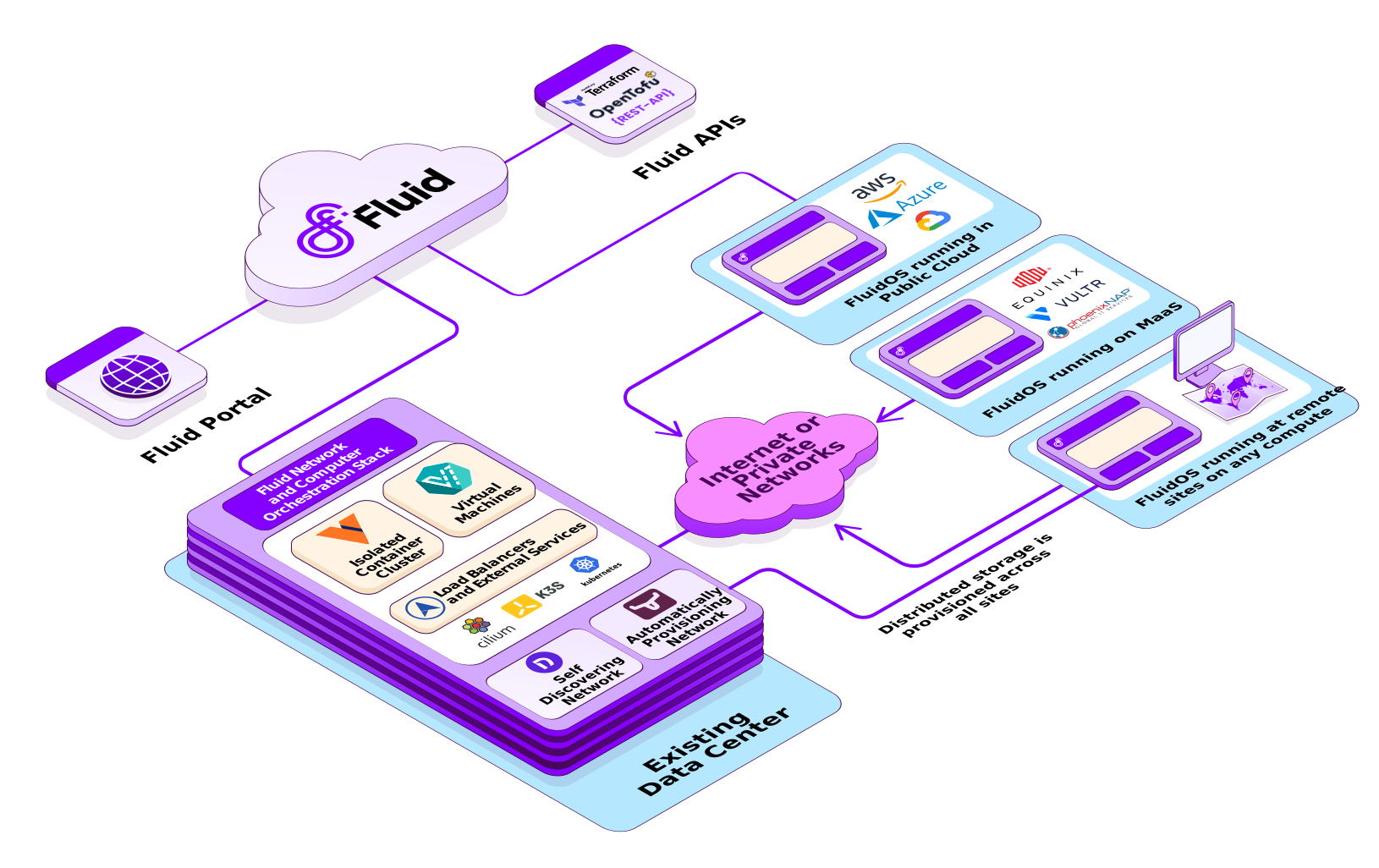Fluid’s cloud platform will transform your legacy infrastructure from a rigid, unsecure, complex network, to a secure, scalable, multi-cloud platform in a matter of minutes. Too good to be true? We recently tailored a multi-cloud solution for ASE, a data and tech provider, to cut their client onboarding procedure from 2-3 days to only several minutes!
By deploying a hybrid solution that combines the best of on-premises and cloud environments we can enable unlimited security, scalable, and high-performance solutions for any business demands.
What can Fluid’s Dynamic, Multi-Cloud Solution Offer?
Fluid combines secure, scalable, cost-effective, and high-performance solutions to meet diverse and dynamic business demands. Our tailored solutions offer:
- Rapid Deployment: Deploy production-ready infrastructure faster, saving time and money.
- Cost Effectiveness: Optimise your resources to reduce operational costs and simplify licensing.
- Enhanced Security and Compliance: Have robust security and compliance for sensitive data protection.
- Performance and Efficiency Gains: Deliver high performance and efficiency for reliable service delivery.
Fluid automates infrastructure deployment and management, removing multi-team, manual repetitive tasks. It simplifies on-prem and bare-metal infrastructure deployment and management, automates cloud-scale network and compute provisioning, and offers centralised management via a cloud-hosted portal.
Fluid’s CTO, Alex Turner, emphasises the platform’s portability, scalability, and flexibility, enabling it to exist in environments where traditional cloud solutions may not reach. Fluid brings workloads closer to end-users and customers, facilitating hybrid clouds and hyper-scalable applications.
What’s Included in Fluid Cloud Solutions
- Bare-Metal Zero-Touch Provisioning: Automatic deployment and configuration on physical hardware, enhancing efficiency and reducing setup time.
- Robust Security with Immutable OS and mTLS: Immutable OS and end-to-end mTLS connectivity ensure trust and reliability in every interaction.
- Advanced Load Balancing: Intelligent distribution of network traffic across servers for optimal performance and uptime.
- Enhanced Virtual Machine Capabilities: Virtualised environments for versatile and isolated application hosting, enhancing scalability and resource efficiency.
- Containerisation and Microservices with Kubernetes Support: Modern application deployment strategies through containerisation and Kubernetes orchestration.
- Multi-Cloud Orchestration with Advanced Networking: Full mesh connectivity between nodes in diverse locations, ensuring seamless integration and communication.
- VPN and Secure Relay Services: Robust, encrypted pathways for secure remote access and data communication.
- Infrastructure as Code (IaC) with Terraform: Efficient infrastructure management and automation using Terraform.
- Optimised Edge Computing Capabilities: Localised processing and data analysis at the network’s edge, reducing latency for critical applications.
Unlimited possibilities
Want even more? Fluid can extend its capabilities without limits by integrating with thousands of open and extensible Kubernetes ecosystem tools, offering businesses a comprehensive and adaptable solution for their IT infrastructure needs.
Does your legacy IT infrastructure need a makeover? Contact the team at Fluid today and see what we can do for you.




